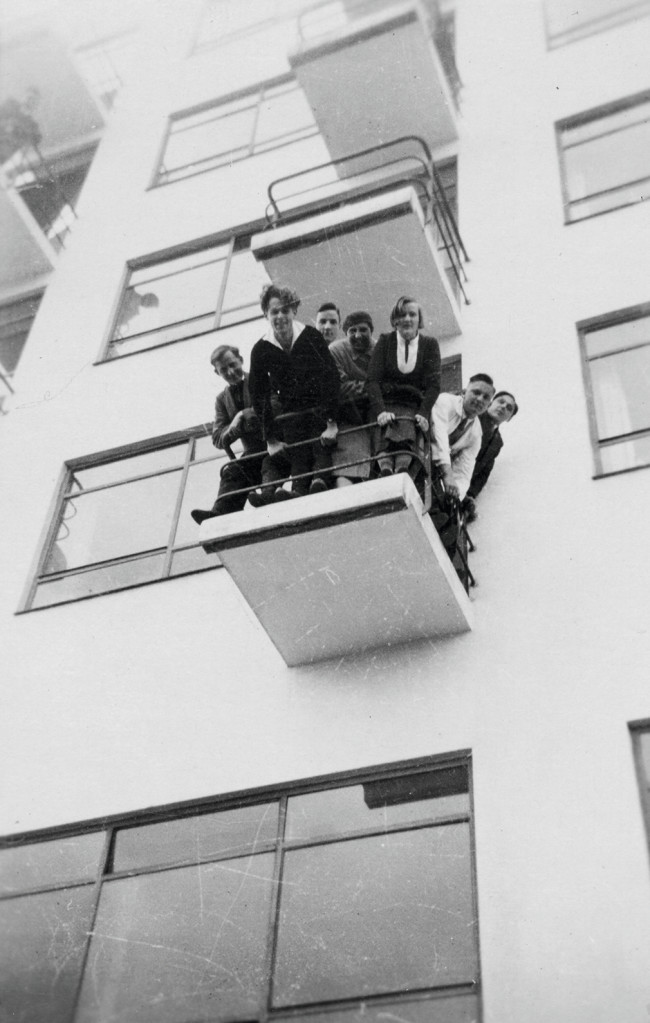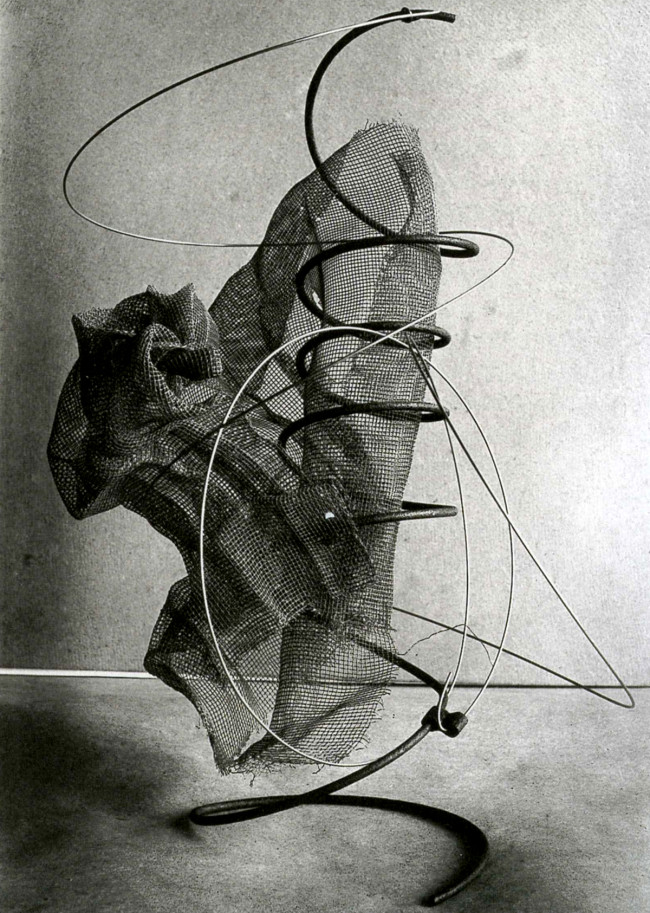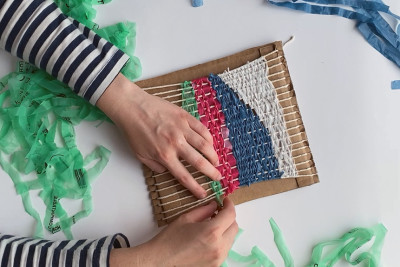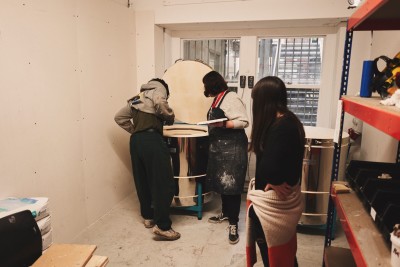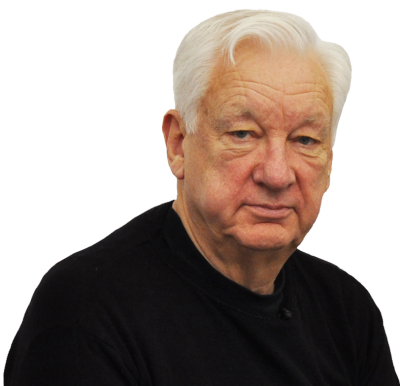Eight art schools that changed the world
Eight art schools that changed the world
By Sam Thorne
Published 28 March 2019
From the influential Bauhaus to contemporary Cuba, centres for studying art have shaped global culture over the past century. Sam Thorne celebrates the most innovative examples.
-
From the Spring 2019 issue of RA Magazine, issued quarterly to Friends of the RA. This issue is an arts education special, to mark the 250th anniversary of the RA Schools.
-
-

Bauhaus
Weimar, Dessau and Berlin, Germany
The Bauhaus remains the most influential art and design school of the 20th century – perhaps of all time. One of a handful of like-minded institutions founded in the aftermath of the First World War and the Russian Revolution, it was established in Germany in 1919 by the architect Walter Gropius. The Bauhaus was nothing less than an attempt to remake the world, to transform industry by bringing together art, design and technology and dismantling the boundaries between the disciplines.
In this sense, the Bauhaus completely broke with the way in which art had been taught at academies in the 19th century. Life drawing classes were eschewed and carefully practised figuration no longer encouraged. They were replaced by geometric abstraction, performance and material experimentation. The school was divided into lab-like workshops, such as metalwork, theatre and photography, each led by a different master.
For all of its enduring legacy, the Bauhaus was short-lived. Opening in Weimar, it moved to Dessau before a brief stint in Berlin, where it was closed in 1933 under Nazi pressure. Many of the students moved on to the US and beyond in the 1930s, disseminating Bauhaus teaching.
In the UK, it shaped the art foundation course, while in the US, Bauhaus tutors and students established programmes at Harvard, and in Chicago and San Francisco. Today Bauhaus precepts still underpin how art and architecture are taught all over the world.
-
-
-
Kala Bhavana
Shantiniketan, India
The experimental art school Kala Bhavana also opened in 1919, in Shantiniketan, West Bengal, close to the modern-day border with Bangladesh. Founded by the polymath and Nobel Laureate Rabindranath Tagore, the school was shaped in part by his rejection of colonial art practices. Teaching was rooted in nature, with ecologically-minded principles which today seem prescient, and its intention was to combine art with craft and performance.
Tagore invited the painter Nandalal Bose to be the first principal. Bose was one of the pioneers of modernism on the subcontinent, and later illustrated the Indian Constitution. Indeed, Kala Bhavana played a central role in shaping modern painting in India. More broadly, it catalysed thinking about what it meant to be modern. It was stridently transnational, connected to international networks, while rejecting the historicism of earlier generations. The school suggested a route out of the dogmatic, Western-derived International Style of architecture, which demanded rectilinear forms without ornamentation.
At Kala Bhavana, eclecticism and impurity were celebrated. Alumni include the great film director Satyajit Ray and the painter KG Subramanyan, who attended during the 1940s and later became Dean of Fine Arts in Baroda. Both a movement and a school, Kala Bhavana shaped the work of generations of Indian artists.

-
-
-

VkhUTEMAS
Moscow, Russia
In the same year that Kala Bhavana and the Bauhaus opened, Kazimir Malevich founded the UNOVIS group (an abbreviation of the Russian for ‘Champions of the New Art’) at the Vitebsk People’s Art School in modern-day Belarus.
Another Soviet experiment in avant-garde art education – larger, though less well known than UNOVIS – was VkhUTEMAS (an acronym for Higher Art and Technical Studios), which opened in Moscow a year later, in 1920. Sometimes referred to as ‘the Soviet Bauhaus’, VkhUTEMAS conceived of art as a kind of industrial production, and was established by the decree of Lenin. Its programme was based on the integration of artistic and scientific practices, underpinned by a kind of foundation course, which leant on material experimentation.
Like the Bauhaus, this was a state-sponsored initiative to produce artist-designers. Its faculty numbered the key Constructivist artists El Lissitzky, who designed the cover of the school’s architecture textbook (pictured), Alexander Rodchenko, Varvara Stepanova and Lyubov Popova, as well as Malevich. Like the Bauhaus, however, VkhUTEMAS proved to be short-lived. It was dissolved in 1930, under an increasingly totalitarian regime.
-
-
-
Black Mountain College
North Carolina, US
When the Bauhaus closed, many of its masters and students moved across the Atlantic, where they kept the flame alive in US art schools. Best known among these was Black Mountain College. Nestled by a lake in the rolling hills of North Carolina, it opened in 1933 – the year the Bauhaus was shuttered – and its tutors included Bauhaus luminaries Josef and Anni Albers. The teaching was inspired by ideas of “learning by doing” propounded by the American philosopher and social reformer John Dewey.
Community life and what was called “co-operative intelligence” were Black Mountain’s primary aims. The campus itself served as a site for live building projects, including Buckminster Fuller’s first (and unraisable) geodesic dome (pictured). This was a politically and socially progressive place: 20 years ahead of the Civil Rights Act, Black Mountain was the first college in the South to integrate. As the painter Dorothea Rockburne, who was a student in the early 1950s, remembered: “The teachers who were at Black Mountain were there because they really believed in freedom and education.”
Other teachers included the composer John Cage, dancer Merce Cunningham, painter Willem de Kooning, art critic Clement Greenberg, photographer Harry Callahan and ceramicist Peter Voulkos. Although over its two-decade lifespan a relatively small number of students enrolled (and very few formally graduated), they included some of the key figures of postwar American art: Robert Rauschenberg, Ruth Asawa, Kenneth Noland and Cy Twombly. The programme was much less hierarchical and more freeform than many other art schools. Indeed, the poet Charles Olson proudly described Black Mountain as “heretical”, in that its first principle held that “the student, rather than the curriculum, is the proper centre of a general education”.

-
-
-

Newcastle University
Newcastle-upon-Tyne, UK
Basic Design was the name given to a new approach to art training that spread across the UK in the 1950s and 60s. Partly indebted to the Bauhaus Preliminary Course, this encompassed an initial year of materials-focused experimentation – the foundation course that is familiar in the UK today.
Much of this Basic Design teaching took place outside London, in cities such as Leeds and Scarborough. These were crucibles for many young artists who later translated their artistic training into the spheres of pop and experimental music. Bryan Ferry was a student of Richard Hamilton’s at Newcastle; the artist once, perhaps apocryphally, described Ferry as “my greatest creation”.
Hamilton studied at the RA Schools, as well as the Slade, but he was also something of a conduit for continental European approaches to art education. In the 1950s, Hamilton spent time at the Hochschule für Gestaltung in Ulm, which was founded by the Bauhaus-trained architect and designer Max Bill. In 1953, Lawrence Gowing invited Hamilton to teach at Newcastle, where he was an influential presence until 1966, including on the foundation course he taught alongside Victor Pasmore (pictured). He brought Bauhaus-infused ideas to a range of topics, from semiotics to Duchamp. As former student, artist David Parsons, recalled in an article accompanying Tate’s 2014 retrospective of Hamilton, it is hard to overestimate the impact of his teaching; at that time, “Art schools were stuck in a mould that had been set in the 1940s, and they taught technique, not ideas.”
-
-
-
CalArts
Los Angeles, US
The California Institute of Arts was established in LA in 1961, moving to its Santa Clarita Campus in 1970 during a period of student revolts, in the midst of vibrant new alternative institutions such as free schools and “anti-universities”. Growing out of a merger between the Los Angeles Conservatory of Music and the Disney-funded Chouinard Art Institute, CalArts quickly sought to establish itself as a place of radical innovation. An excerpt from an early faculty meeting includes the claim that, “Right here we are at the centre of the revolution.” Early classes allegedly included witchcraft and joint-rolling.
CalArts defined itself as both an institute and an interdisciplinary community, rather than an art school. For the first five years or so, faculty staff were free to teach whatever they wanted, and there was no grading system or course requirements. An early slogan said, “as many curricula as students”, and the Dean of Art said that he wanted to recruit staff who were ‘practitioners first and teachers second’. The faculty that was assembled encompassed emergent conceptual tendencies and performance art (pictured), pioneered by John Baldessari, Michael Asher and Douglas Huebler, feminist practices (Judy Chicago, Miriam Schapiro), as well as Fluxus (Allan Kaprow). This diverse faculty was united by the belief that every student is an artist.

-
-
-

Kunstakademie Düsseldorf
Düsseldorf, Germany
If for art schools in the West the interwar period was one of experimentation, the two decades after the Second World War were a time of rapid growth. By the 1960s, artists began to be employed in larger numbers by institutions that were increasing in size. At the same time, several select art schools were accruing an unprecedented level of influence.
Very few art schools become synonymous with a particular movement or period, but Kunstakademie Düsseldorf did both. In the 1960s, its progressive teaching was led by pioneering figures such as Joseph Beuys (pictured) and a student roster that included Gerhard Richter, Sigmar Polke and Blinky Palermo, who were to become some of Germany’s most influential painters. A decade later, Düsseldorf became connected with a generation of young photographers who coolly aimed to dismantle and reassemble the medium: Andreas Gursky, Thomas Struth, Candida Höfer and Thomas Ruff, under the tutelage of Bernd and Hilla Becher. Today, they are collectively still referred to as the “Düsseldorf School”.
-
-
-
Cátedra Arte de Conducta
Havana, Cuba
In the past couple of decades, dozens of alternatives to conventional art schools have popped up, from Ramallah to Vilnius. These schools take myriad forms: reading groups, evening classes, road trips, lecture series and salons.
These projects have most often been set up by artists, and more occasionally by curators and educators, though rarely are they claimed as artworks, exhibitions or curatorial projects. Neither are they merely symbolic gestures. More often, they are conceived as critical alternatives or para-institutions, small-scale but long-term platforms to explore critical education and community.
One of the most significant was run between 2002 and 2009 by the Cuban performance artist Tania Bruguera, in the living room of her home in Havana. Its name, the Cátedra Arte de Conducta, roughly translates as the Behaviour Art Department – a reference to both Bruguera’s idea of performance art as encompassing “behaviour”, and a young people’s correctional facility, where she had herself worked as an art teacher. Its goal, she said, was “constructing citizenry”. Classes were free and open to all, and participants included video artist Anri Sala (pictured; with Bruguera).
Bruguera was recently arrested, and subsequently released, following government crackdowns in Cuba on freedom of artistic expression. She has argued, “Education is the number one medium through which the state creates change in society."

-
-
Sam Thorne is Director of Nottingham Contemporary. He is the author of School (Sternberg Press) and co-curator of Undead: Pop Culture in Britain Beyond the Bauhaus at Nottingham Contemporary, from 21 September 2019–5 January 2020.
-
-
Course: Inside the Bauhaus classroom
Ahead of leading an RA course, artist Fritz Horstman spotlights a work made under the guidance of Bauhaus master Josef Albers.
Material Studies, or Materie, were at the very heart of the Bauhaus – not only of its Preliminary Course, but of its entire curriculum of experimentation and learning- by-doing. The focus instructors placed on mundane materials changed the course of modern art and design education. Where previous pedagogies had taught that the most advanced students would work with precious materials such as marble, Bauhaus students were encouraged to investigate the humblest of materials such as wire, thread and newspaper.
Josef Albers arrived at the Bauhaus in 1920 as a student. His proficiency was quickly identified and he was asked to teach a section of the Preliminary Course in 1923. By 1928 he was running it. Albers saw the value of putting basic materials into the hands of students. With simple hand tools and intuition, students developed a deep understanding of the potential and limitations of their materials. Instead of memorising established design principles, they discovered their own. Improvisation was celebrated.
This year, to mark the school’s centenary, a five-day practical course at the Royal Academy explores the exercises led by Albers, as well as other influential Bauhaus masters such as László Moholy-Nagy. While creating Materies, Albers’ students were guided to seek the essence of their chosen material both in isolation and in combination. In a photograph from Albers’ class (pictured) we see a student’s project of coiled and looping wire combined with wire mesh. Two gauges of wire have been used. The stouter of the two is spiralled almost as a spring, and exhibits its structural strength by carrying the weight of the entire assemblage. The thinner wire is attached at top and bottom by small clips, and still looks ready to spring loose at the slightest jostling.
The wire mesh most readily exhibits the thinking hand of the student. Loosely rolled into the larger wire’s coil at the centre of the photo, on the left it is twisted and scrunched in a way that demonstrates the flexibility and memory of its constituent metal. There are no classical compositional techniques evident in this assemblage, yet the student has found a way of showing the capabilities and limitations of its materials, as well as the process of making it. The core tenets of Bauhaus pedagogy are beautifully demonstrated in its most quotidian of materials.
Fritz Horstman is Artist Residency and Education Coordinator of the Josef and Anni Albers Foundation. He leads the course The Bauhaus Preliminary Course: Light and Space and Thread 22–26 July. Image courtesy the Josef and Anni Albers Foundation.
-
